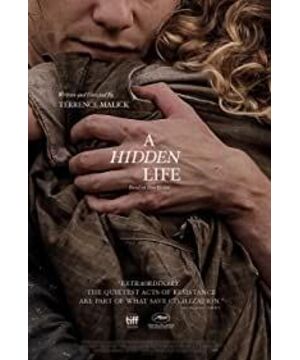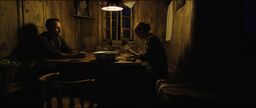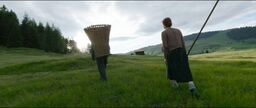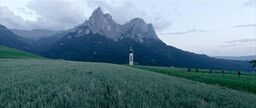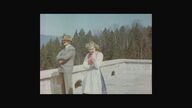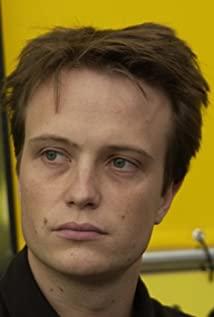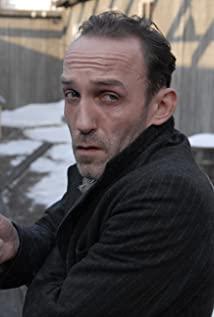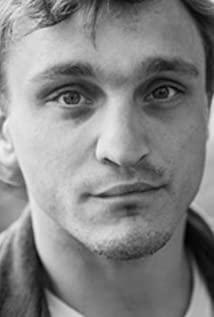(After a long time, I remembered that I wrote this but did not post it)
Spoiler warning!!!
Spoiler warning!!!
Spoiler warning!!!
Malik is back, but this time he is a little bit different from his previous self. He is both an innovation and a return.
Starting from the new world, it can even be said that starting from the thin red line, Malik gradually distributes the lens to the natural world and people outside the main line to assist in the expression of the theme. This approach reached a peak in the tree of life, and finally moved towards the recorded image of time travel. After several attempts, he was quite controversial, like the form of love to death, unbearable look tired.
This time in the secret life, he returned to narrative, but it was more than narrative. This time I am more focused than any previous time, focusing on an event itself. Malik did not spend too much time to render the natural scenery, the universe, or the historical society. There are a little recorded images of World War II, but they are only used as a background. This work is more cohesive, specific and complete. World War II was a background, and there was no gunfire or enemy troops. All the shots were either in the small village of Radegund, or the prison or cell where the male protagonist Franz was located. The audience's perspective is actually limited. We see very little about the Nazis, only seeing what Franz has seen, and hearing only the words of the neighbors. Therefore, we can only pay attention to the movements of the male protagonist's family, let us get closer to his inner thoughts, difficulties, and touch his struggles.
The nearly three-hour work is still full of poetic murmurs, familiar wide-angle lenses and endless broken thoughts in the protagonist's heart. In terms of form, it can be said to have inherited its usual style, focusing on the environment and the movement of the characters in the environment. When the characters appear, they usually give the mid-to-near perspective, while the empty mirror is a grand vision. The smooth editing and James Newton Howard's steady orchestral soundtrack make it a great audio-visual enjoyment even if the story is aside.
In a word, the secret life tells the story of Franz living in Radegund, who refused to be recruited for military service in Nazi Germany due to his personal beliefs, was imprisoned and left his homeland and was sentenced. The film can be divided into two parts based on Franz being taken away and imprisoned from Radegonde as the node.
The first part of the environment is the small village in the mountains of Radegonde. The main line is the life of the Franz family, and the male owner should not conscript the inner struggle. The triviality of the idyllic family can be the basis for the birth of its inner beliefs, an idyllic pursuit of life, which is naturally at odds with the expansion of the external Nazis. The setting of the landscape reminds people of the day in heaven, and the ups and downs of the characters in the wheat field will evoke the classic pictures in the previous works, just like the thin red line of soldiers walking in the tall grass of the mountains of Guadao, and the new world The middle character shuttles among the bushes of the American continent.
It’s not the first time that Malik has let a man search hard in his own movie. From the New World to the Knights of the Holy Grail, we have seen similar figures, but Franz seems to be the most decisive and almost stubborn. He has no nostalgia for himself, but he has nostalgia for his lover. And family, that was his last bondage. He was ready to suffer, yes, it was suffering, martyrdom for his faith.
After Franz was captured, the environment was divided, and the narrative was divided into two lines, with Franz in prison on one side and his wife and children at home on the other. Franz suffers in prison, and his wife and children are excluded from the neighborhood at home. At this time, there are more inner portrayals of the hostess. In fact, the wife plays a very powerful role in the formation of Franz's thought. If the expression here is not appropriate, it will become Franz abandoning his wife and children for his own stubbornness. However, it is actually the opposite, his firmness. Faith comes from the wife, from this family. The emergence of this family core seems to follow the theme of the tree of life. The wife's last visit to Franz strengthened Franz's determination, and the film also reached its climax. Then there is that very sharp flashback, at the last moment, what I remember is exactly what you were when you were.
The secret life is closer to the persistence of personal beliefs than simply anti-war and anti-Nazis. From the core, it is close to the silence of Endo Shusaku. Franz asked God for answers again and again, and the response was only cold silence. The pastor's answer was no longer the pureness he was looking for. Franz could only continue to torture himself, putting himself outside the frenzy of thought, putting himself in a dangerous place, in order to get a little closer to the answer he was looking for. It has nothing to do with a person’s resistance to the history of the country, whether it is great, how many people can be affected, civilized conscience, or shaken Nazi thinking. Those are non-existent, as the officer played by Bruno Gantz said: "Out of this door, no one will know you."
The silent preacher finally compromised in exchange for the lives of others, and Franz was resolutely unwilling to sign even a piece of paper to verbal allegiance to the Nazis. He was the most steadfast saint.
Write at the back
Later, I remembered going to Google Franz’s character prototype, writing that he was “later revered as a martyr and held a blessing”. Probably this movie is more of a story of faith.
View more about A Hidden Life reviews


